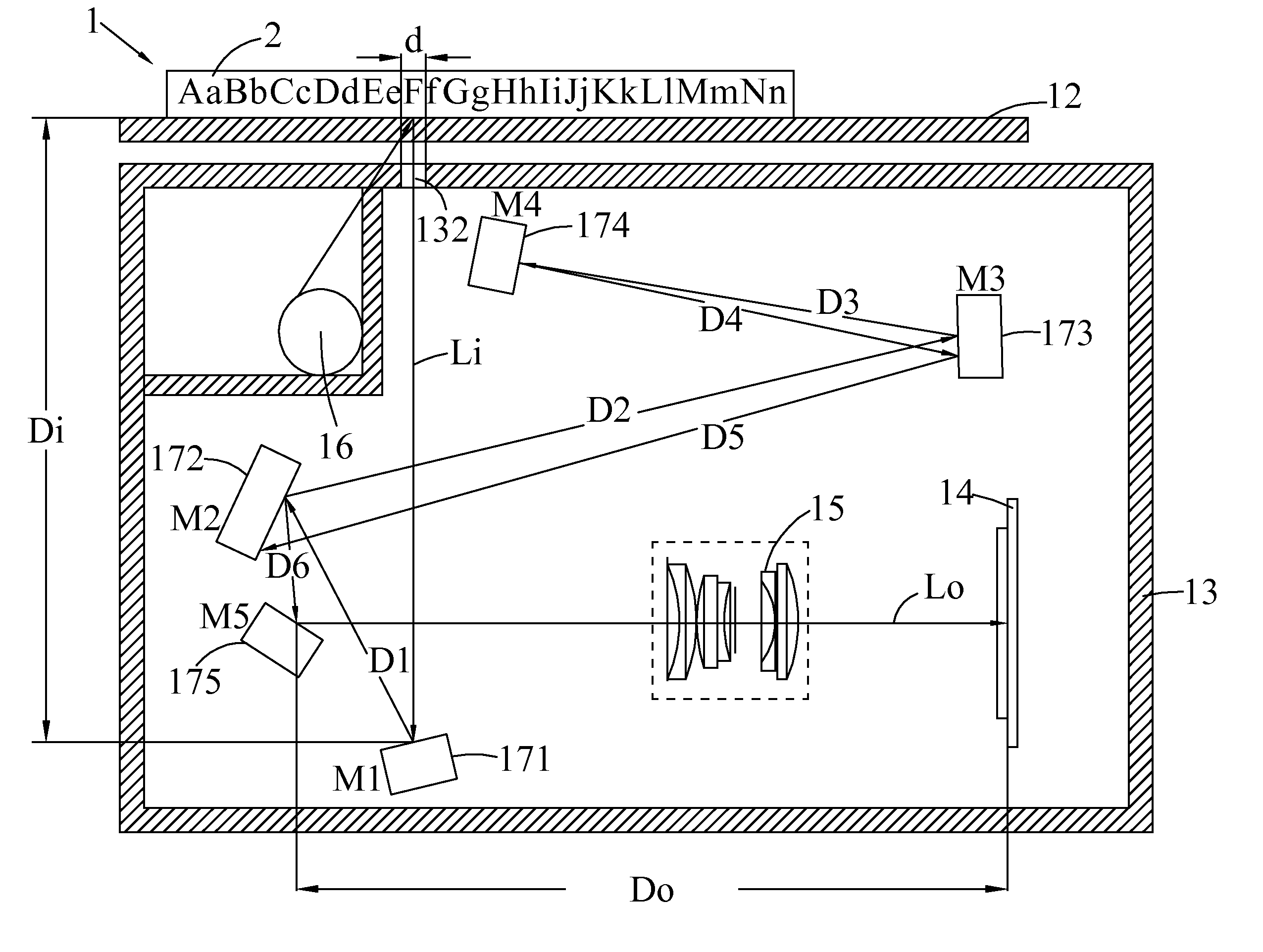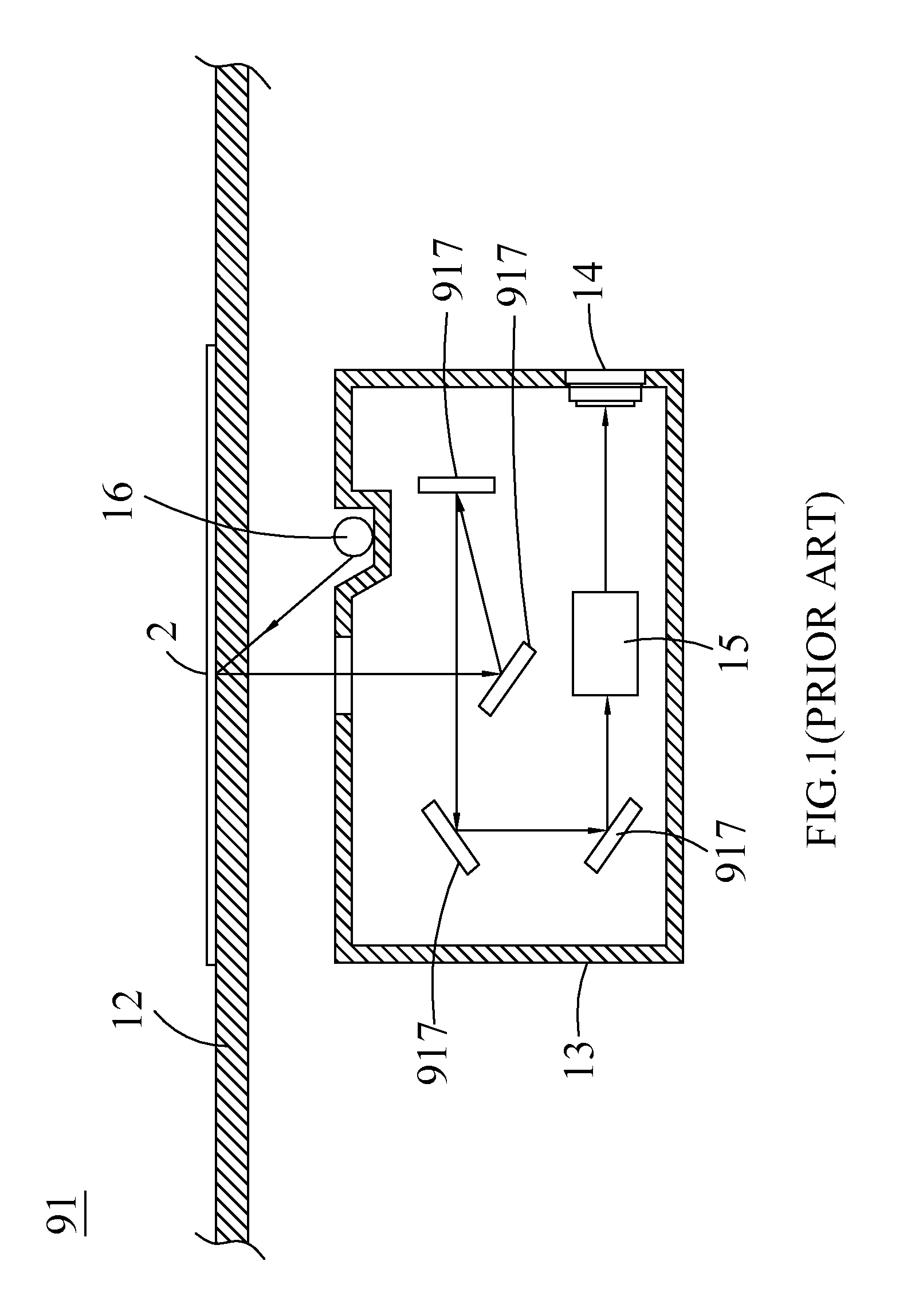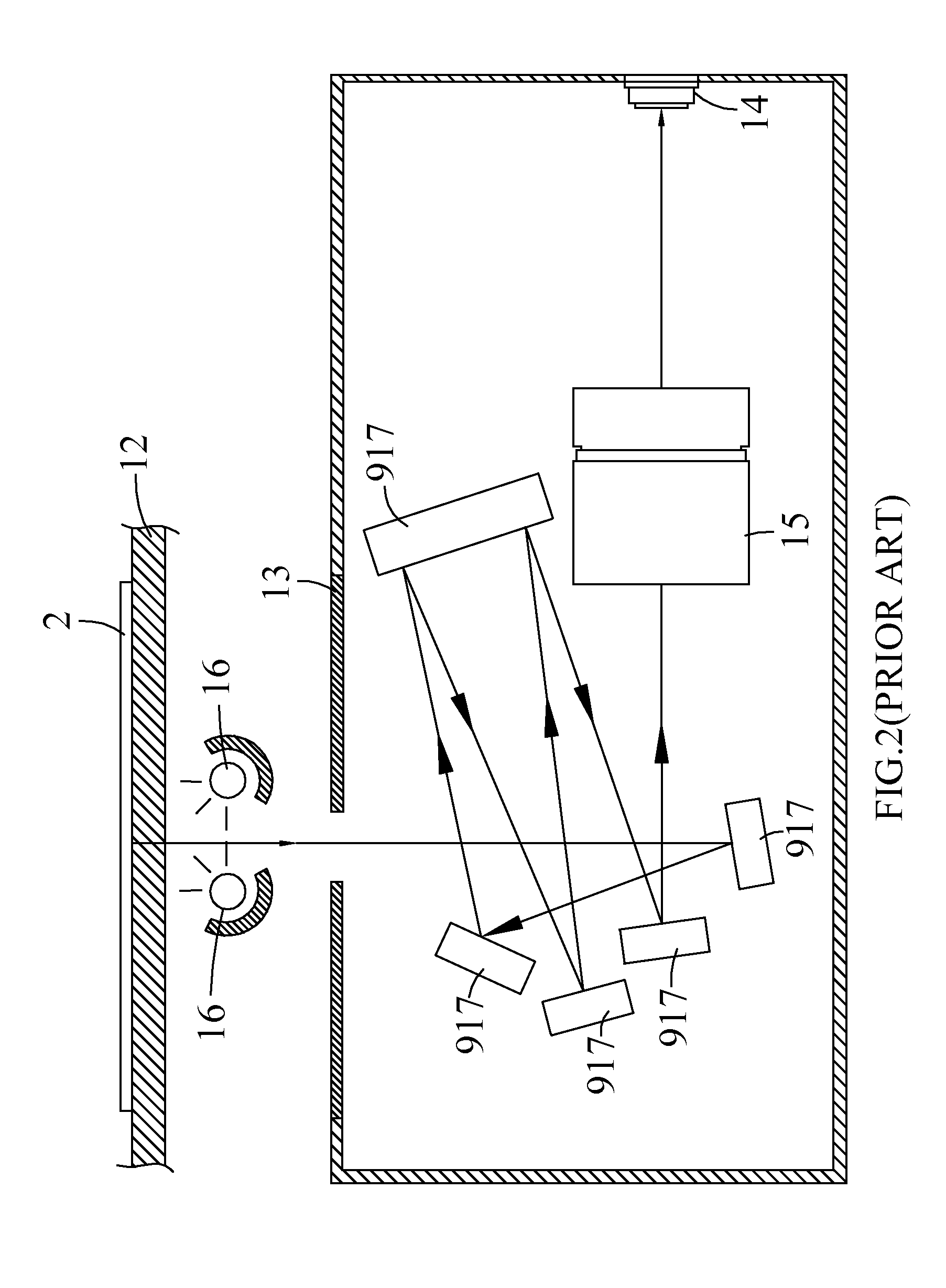Penta-mirror multi-reflection scanning module
- Summary
- Abstract
- Description
- Claims
- Application Information
AI Technical Summary
Benefits of technology
Problems solved by technology
Method used
Image
Examples
Embodiment Construction
[0023]The technical characteristics of an image scanning module thereof in accordance with the present invention will become apparent from the following detailed description taken with the accompanying drawings.
[0024]With reference to FIG. 4 for an image scanning module 1 having five reflecting mirrors for multi-reflection, the image scanning module 1 comprises a light source 16, five reflecting mirrors (M1, M2, M3, M4, M5) 171˜175, a pickup lens 15, an image sensor 14 and a frame 13. After the light source 16 emits a light, the light passes through the cover glass 12 and is projected onto a scanning document 2. The scanning document 2 reflects the light to form a reflected light. After the reflected light passes through the cover glass 12 to form an image beam Li 21 incident at the image scanning module 1. After the image beam Li 21 is incident at a first reflecting mirror (M1)171 to give a first reflection, the reflected image beam is incident at a second reflecting mirror (M2)172...
PUM
 Login to View More
Login to View More Abstract
Description
Claims
Application Information
 Login to View More
Login to View More - R&D
- Intellectual Property
- Life Sciences
- Materials
- Tech Scout
- Unparalleled Data Quality
- Higher Quality Content
- 60% Fewer Hallucinations
Browse by: Latest US Patents, China's latest patents, Technical Efficacy Thesaurus, Application Domain, Technology Topic, Popular Technical Reports.
© 2025 PatSnap. All rights reserved.Legal|Privacy policy|Modern Slavery Act Transparency Statement|Sitemap|About US| Contact US: help@patsnap.com



